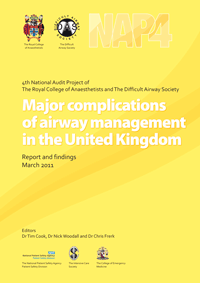In the current issue of JEMS, there is an article by Dr. Bryan Bledsoe that does an excellent job of identifying many of the problems with low standards in EMS – at least if the quality of care is important.
Also, if you will note, the welding curriculum was revised in 2011.
The paramedic curriculum was last revised in 2009. Which trades would you say have had the most changes in the last eight to 10 years? Certainly changes in EMS have occurred much more frequently and are much more significant than those that have occurred in welding.[1]
In some places, EMS has been more aggressive in changing treatment guidelines/protocols to improve the care delivered to patients. In other places, change has been resisted.
Backboards are rarely used in the places that have admitted that we do not have any valid evidence that backboards improve outcomes, while we do have good evidence that backboards cause harm. Even more important is the evidence that manipulating the patient’s spine in order to stabilize the spine is wishful thinking that encourages us to do exactly what we claim to be trying to prevent.
High dose NTG (NiTroGlycerin – GTN GlycerylTriNitrate in Commonwealth countries) is becoming much more widely used for acute CHF/ADHF (Acute Decompensated Heart Failure), because high dose NTG dramatically improves survival and decreases the perceived need for aggressive airway manipulation.
Likewise, furosemide is being eliminated from the CHF/ADHF guidelines/protocols, because furosemide does not do what it is supposed to do and furosemide causes harm that it is not supposed to cause.
Ketamine is becoming the drug for many indications. Ketamine may be the best sedative, best analgesic, best agitated delirium treatment available to EMS.
How do we know that we have been harming patients?
Enough people stopped listening to the old timers, the QA/QI/CYA people who don’t understand quality, the brand new if it were dangerous, it wouldn’t be in the protocol people, and other opponents of quality care.
People are paying more attention to the evience, rather than making excuses for the absence of evidence.
What is important is whether or not the graduating paramedic is competent and ready to assume the important role of prehospital care.[1]
Many states use the NREMT (National Registry of EMTs) test to determine if a paramedic is ready to become a new hire paramedic with no experience, some day to be able to work without a supervisor present. Some states continue to require this babe in the woods test of outdated material as their goal for even experienced paramedics.
The NREMT is holding EMS back.
It is time for the national standard curriculum to go away. We must meet and decide what the core competencies of a paramedic will be. We must validate these core competencies through scientific study. Then, we should leave it up to the educators to determine how best to educate their students in these core competencies.[1]
The paramedic curriculum, revered by the NREMT, harms patients.
Why are we protecting a curriculum that harms patients?
–
Footnotes:
–
[1] Is EMS a Trade or a Profession?
Thu, Jul 28, 2016
ByBryan Bledsoe, DO, FACEP, FAAEM, EMT-P
JEMS Editorial Board member
Journal of EMS (JEMS)
Article
.














Subscribe to RogueMedic.com